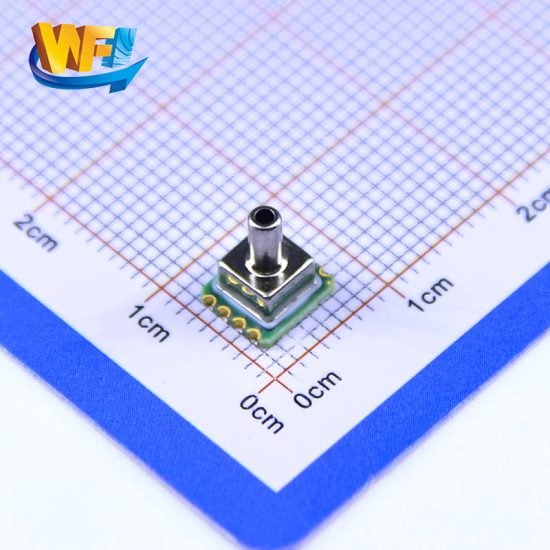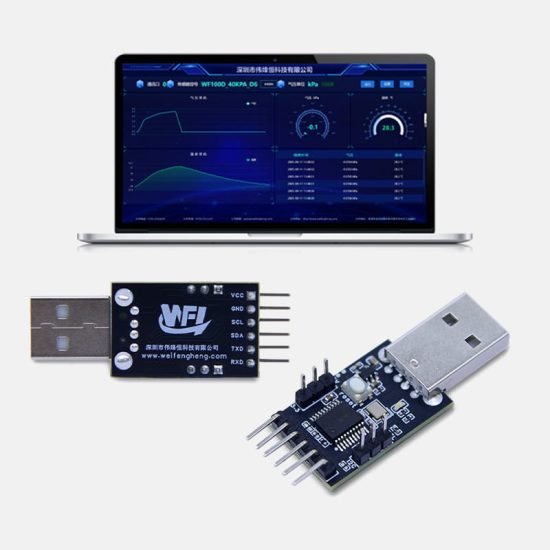목록
With MEMS technology advancement, temperature measurement in pressure sensor chips has become critical for ensuring device stability and accuracy. Temperature drift directly impacts sensor long-term reliability, while selecting appropriate temperature measurement methods can significantly improve overall system performance.
1. Integrated On-Chip Temperature Sensor Solution
온칩 온도 감지의 장점
Integrated temperature sensors directly embedded in MEMS chips achieve the most accurate temperature differential detection. This solution typically offers thermal sensitivity within 0.1°C, with measurement range covering industrial standard -40°C to 125°C. Chip-level integration eliminates external temperature measurement delays, enabling real-time temperature compensation algorithms. Startup stabilization time reduces to 5-10 seconds, improving response speed by 3-5 times compared to external solutions.
온도 보상 알고리즘 구현
Integrated solutions support multi-point temperature compensation through preset temperature rise curve databases, accurately predicting pressure offset at different temperatures. Collected temperature data directly feeds compensation algorithms for millisecond-level real-time correction. This method maintains temperature consistency error within ±0.05°C, achieving 2-3 times better accuracy than external solutions.

2. External Temperature Sensor Configuration
독립 온도 모니터링 시스템
External temperature sensors typically use thermistors or digital temperature chips installed near pressure sensors. This configuration offers maximum measurement range up to 200°C, suitable for extreme conditions. However, spatial distance and thermal conduction delays limit temperature differential detection accuracy, typically within ±0.5°C range.
열 응답 시간 고려 사항
External solutions typically require 30-60 seconds thermal response time, potentially causing measurement lag in rapid temperature change environments. Temperature testing tools show external sensor temperature drift compensation effectiveness significantly decreases during high-frequency temperature changes, with errors potentially increasing to ±2°C.
3. Infrared Temperature Measurement Technology
비접촉 온도 감지
Infrared temperature measurement monitors temperature through chip surface thermal radiation detection. This method suits high-temperature or difficult-to-access applications, with measurement accuracy within ±1°C range. Microscopic temperature imaging detection provides chip surface temperature distribution maps, helping identify hot spots and temperature gradients.
응용 프로그램 제한 분석
Infrared measurement is significantly affected by environmental factors including humidity, dust, and surface emissivity changes. In precision measurement applications, this method’s accuracy and stability cannot meet high-precision pressure measurement requirements.
4. Temperature Modeling and Prediction Methods
알고리즘 기반 온도 추정
By analyzing pressure sensor electrical characteristic changes, temperature models can be established to indirectly estimate chip temperature. This method utilizes pressure-sensitive element temperature coefficient characteristics, calculating temperature through resistance or capacitance change measurements.
기계 학습 최적화
Modern temperature modeling combines machine learning algorithms for adaptive temperature characteristics under different operating conditions. Through extensive historical data training, models can predict temperature change trends in complex environments, improving temperature compensation accuracy.

5. Hybrid Temperature Measurement Solutions
멀티 센서 퓨전
Combining integrated and external temperature sensors through data fusion algorithms improves measurement accuracy and reliability. This solution enables mutual verification of measurement results, providing backup protection when single sensors fail.
자기 교체 메커니즘
Hybrid solutions support automatic calibration functions, regularly comparing different sensor readings and automatically adjusting compensation parameters. This mechanism effectively reduces long-term drift while maintaining system temperature consistency.
결론
Based on comprehensive performance evaluation, integrated temperature sensor solutions demonstrate optimal performance in measurement accuracy, response speed, and compensation effectiveness, making them the most effective method for MEMS pressure sensor chip temperature measurement. Their 0.1°C thermal sensitivity and millisecond response time meet most industrial application requirements. For extreme temperature environments, hybrid measurement solutions are recommended, combining integrated sensor precision advantages with external sensor wide-range characteristics.
위의 소개는 압력 센서 기술 적용의 표면적인 부분에 불과합니다. 우리는 다양한 제품에 사용되는 다양한 유형의 센서 요소, 작동 방식, 장점과 단점을 계속해서 탐구할 것입니다. 여기에서 논의된 내용에 대해 더 자세히 알아보려면 이 가이드 뒷부분의 관련 콘텐츠를 확인하세요. 시간이 촉박한 경우 여기를 클릭하여 이 가이드의 세부정보를 다운로드할 수도 있습니다. 공기 압력 센서 제품 PDF 데이터.
다른 센서 기술에 대한 자세한 내용은 다음을 참조하십시오. 센서 페이지를 방문하십시오.
